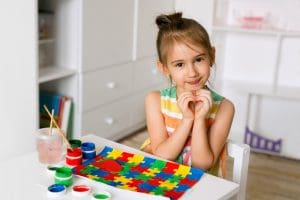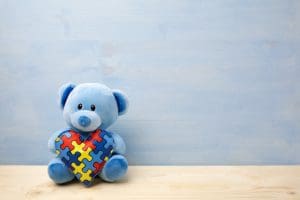Neurodiversity is an umbrella term that refers to a variety of differences in the way our brains process information and our behavioural traits. When we refer to a person as being neurodiverse, this is often due to them living with autism or Autism Spectrum Disorder (ASD), Attention Deficit Hyperactivity Disorder (ADHD), or similar.
Neurodiversity is not uncommon. For example, it is estimated that 1 in 100 people in Australia live with autism. Creating neurodiverse-friendly environments in early childhood education and care (ECE) settings is crucial for supporting the learning and development of all children, including those on the autism spectrum.
Learning environments that cater to neurodiverse individuals helps to advocate for understanding, acceptance, and support for their differences, rather than viewing them as problems to be fixed, promoting a more inclusive approach to early childhood education.

Understanding neurodiversity in early childhood education
In early childhood settings, educators may observe various characteristics in neurodiverse children that reflect differences in learning, attention, communication, and social interaction.
These characteristics can include but are not limited to:
- Unique learning styles
- Variations in focusing ability (hyper focussed or difficulty focusing)
- Diverse ways of engaging with others
- Difficulty deviating from routine
- Sensory sensitivity, such as with textures, sounds, lights, smells
As an understanding and supportive educator, it’s helpful to notice and appreciate these differences. This empowers you to create an inclusive learning environment that adapts to each child’s needs, individual strengths, and challenges.

Creating neurodiverse-friendly learning environments in child care
Recognising neurodiversity among children, early childhood educators can develop learning environments that value and support all forms of learning and interaction.
Adapting teaching methods: You may need to adapt your approach to each child. This means using a variety of teaching styles to cater to different learning needs.
Flexible spaces: Offer a range of seating options and quiet areas to accommodate sensory needs.
Stick to routines: Create a predictable and structured environment where routines and expectations are clear to reduce anxiety and enhance a sense of security.
Use visual aids: Incorporate visual schedules, signs, and prompts to help communicate routines and expectations clearly, benefiting all children, particularly those on the autism spectrum.
Sensory sensitivity awareness: Be mindful of sensory sensitivities. Some children may be overwhelmed by loud noises, bright lights, or certain textures. Adjusting the sensory aspects of your environment can help these children feel more comfortable.
Sensory tools: Provide sensory tools and toys to help children self-regulate.
Clear communication: Consistently use simple, concrete language to avoid confusion. Be aware of using and picking up on non-verbal communication cues too.
Child care training that values inclusivity
At Selmar, our child care courses provide foundational knowledge and skills for creating inclusive and supportive environments for all children. Our courses are also neurodiversity-friendly themselves, offering ample support for all kinds of learners.
Recognising the neurodiversity among children, including those with ASD and ADHD, early childhood educators can create an inclusive learning environment that values and supports all forms of learning and interaction.
Explore our early childhood education courses here or speak to our helpful team about progressing your career as an educator to make a difference for children.



